About the Department
III Sem Laboratory:
Electrical Machine I Lab
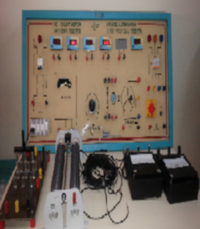
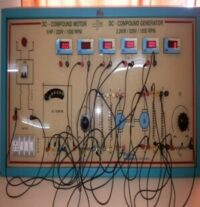
Objectives:
- The students should read the laboratory description in advance, in order to refresh the knowledge acquired during the courses. They also should make a plan of the work-flow.
- During the laboratory classes, the students must have the text of the current laboratory and a notebook. They will note the results of the experiments, the answers to different questions that can be found in the text as well as the answers for the questions addressed by the professor.
- Before the actual laboratory work starts, the professor will verify if the students have the required theoretical knowledge for the the current laboratory. These tests will provide an assessment of 20% of the final grade. If it is considered that the student does not have the necessary knowledge for the lab, because he does not read the text in advance, the student will be denied the right to continue laboratory work.
Electronics laboratory
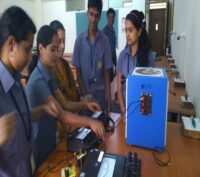

Objectives:
- The students should read the laboratory description in advance, in order to refresh the knowledge acquired during the courses. They also should make a plan of the workflow.
- During the laboratory classes, the students must have the text of the current laboratory and a notebook. They will note the results of the experiments, the answers to different questions that can be found in the text as well as the answers to the questions addressed by the professor.
- Before the actual laboratory work starts, the professor will verify if the students have the required theoretical knowledge for the current laboratory. These tests will provide an assessment of 20% of the final grade. If it is considered that the student does not have the necessary knowledge for the lab, because he does not read the text in advance, the student will be denied the right to continue laboratory work.
3rd year laboratory:
DC MACHINE AND SYNCHRONOUS MACHINE LABORATORY:

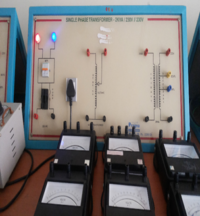
Objectives:
1 To provide the students a chance to put theory into practice.
2 To get familiar with DC machines, Transformers, synchronous machines and induction motors and give them experimental skills.
3 To calculate the various parameters and characteristics of the Electrical machine.
4 To understand the basic principles of operation of rotating electric machines, their classification, and basic efficiency and performance characteristics.
5 To understand the operation and basic configuration of AC machines, including the synchronous motor and generator, and the induction machine.
Transformers and induction machine lab


Objectives:
- To learn testing methods of single-phase transformers
- To learn testing of induction motors for various loads
- To conduct an experiment to draw V and inverted v curves for synchronous motor
- To calculate Xd and Xq of a salient pole synchronous motor
- To learn about different losses of AC machines 6. To learn about different tests on AC machines.
4th year laboratory:
High Voltage laboratory:

Objectives:
The aim for establishing the High Voltage Laboratory was to support the study about high voltage insulator performance in the Kingdom. Later to that, the HV lab capabilities were expanded to cope with increasing needs for research and testing about high voltage equipment and to support the teaching and training of students in the electrical engineering department. The HV Lab is equipped with high voltage AC, DC and impulse sources. Additional measuring and sample preparation equipment are also available to support the lab work. At the same time, the HV Lab is assisted by the Research Institute’s diversified facilities. This paper will present the current facilities and services of the HV Laboratory, in addition to future plans to enhance the Lab. It was clear that the services of the HV Lab, especially to make type, acceptance and special testing for locally manufactured electrical equipment, are highly needed. The Lab is looking for broadening its capabilities and services to address the local utilities and industry testing needs.
3rd year laboratory:
Control System Laboratory:
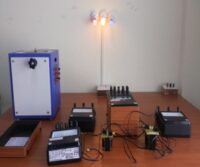

Objectives:
- To familiarize the students with the analog computer
- To help the students understand and practice the modeling, simulation, and implementation of a physical dynamical system by a linear time-invariant ordinary differential equation
- To highlight the electrical modeling of a second-order system and analyze the under-damped, over-damped, and critically damped cases
- To study the effects of poles and zeros location in the s-plane on the transient and steady-state behavior
- To study the effects of Lead, Lag, and Lag-Lead series compensator on a second-order system transient and steady-state system response.
Computer Aided Engineering Drawing:
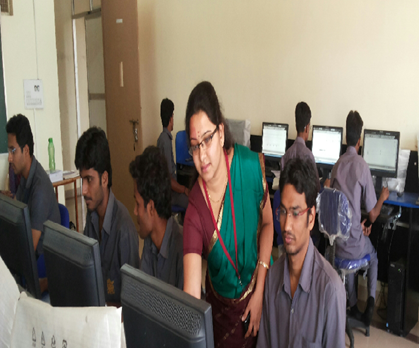
Objectives:
Accurately generated and easily modifiable graphical representation of the product. The user can nearly view the actual product on screen, make any modifications to it, and present his/her ideas on screen without any prototype, especially during the early stages of the design process. n Perform complex design analysis in a short time.
Implementing Finite Elements Analysis methods the user can perform: n Static, Dynamic, and Natural Frequency analysis, Heat transfer analysis, Plastic analysis, Fluid flow analysis, Motion analysis, Tolerance analysis, Design optimization n Record and recall information with consistency and speed.
In particular, the use of Product Data Management (PDM) systems can store the whole design and processing history of a certain product, for future reuse and upgrade.
